Robert Weigel
Resonate-and-Fire Spiking Neurons for Target Detection and Hand Gesture Recognition: A Hybrid Approach
May 22, 2024Abstract:Hand gesture recognition using radar often relies on computationally expensive fast Fourier transforms. This paper proposes an alternative approach that bypasses fast Fourier transforms using resonate-and-fire neurons. These neurons directly detect the hand in the time-domain signal, eliminating the need for fast Fourier transforms to retrieve range information. Following detection, a simple Goertzel algorithm is employed to extract five key features, eliminating the need for a second fast Fourier transform. These features are then fed into a recurrent neural network, achieving an accuracy of 98.21% for classifying five gestures. The proposed approach demonstrates competitive performance with reduced complexity compared to traditional methods
Cross-modal Learning of Graph Representations using Radar Point Cloud for Long-Range Gesture Recognition
Mar 31, 2022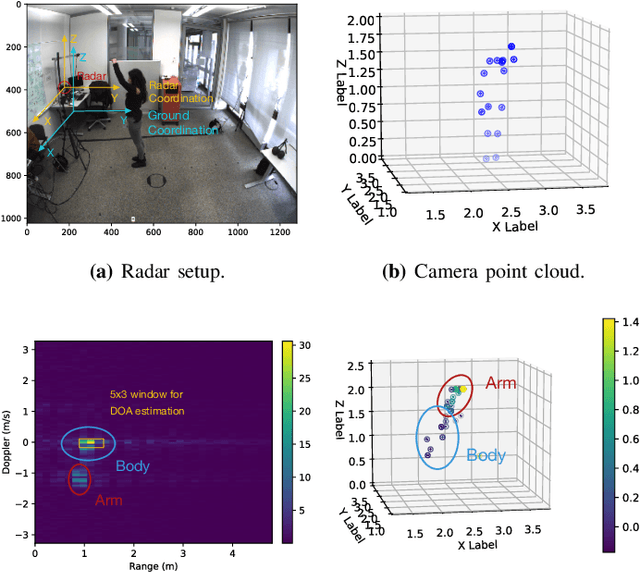


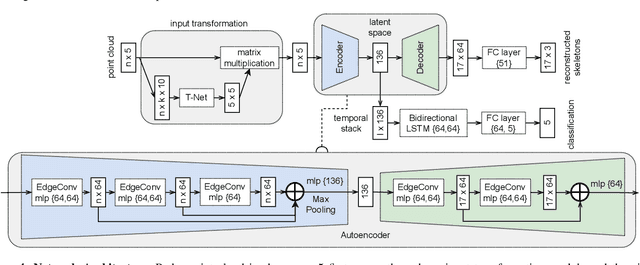
Abstract:Gesture recognition is one of the most intuitive ways of interaction and has gathered particular attention for human computer interaction. Radar sensors possess multiple intrinsic properties, such as their ability to work in low illumination, harsh weather conditions, and being low-cost and compact, making them highly preferable for a gesture recognition solution. However, most literature work focuses on solutions with a limited range that is lower than a meter. We propose a novel architecture for a long-range (1m - 2m) gesture recognition solution that leverages a point cloud-based cross-learning approach from camera point cloud to 60-GHz FMCW radar point cloud, which allows learning better representations while suppressing noise. We use a variant of Dynamic Graph CNN (DGCNN) for the cross-learning, enabling us to model relationships between the points at a local and global level and to model the temporal dynamics a Bi-LSTM network is employed. In the experimental results section, we demonstrate our model's overall accuracy of 98.4% for five gestures and its generalization capability.
Light-weight Gesture Sensing Using FMCW Radar Time Series Data
Nov 22, 2021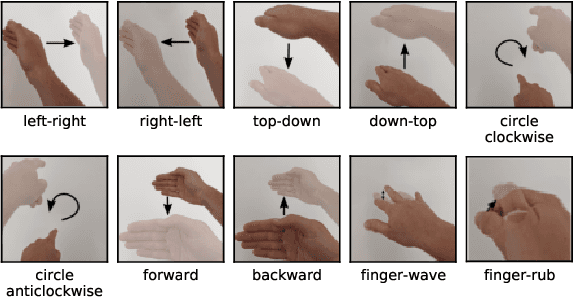
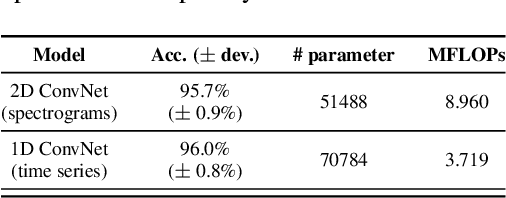

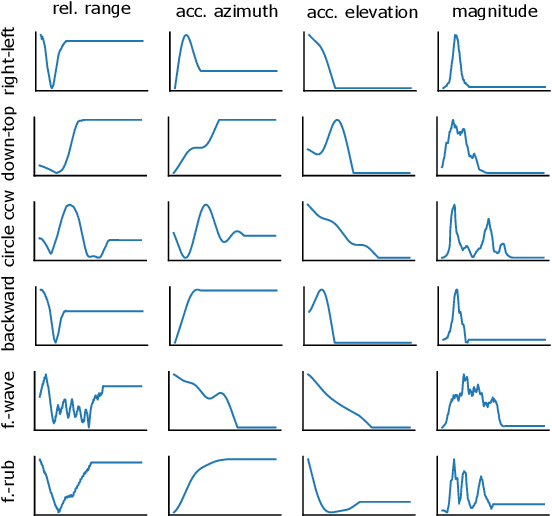
Abstract:The paper proposes a novel feature extraction approach for FMCW radar systems in the field of short-range gesture sensing. A light-weight processing is proposed which reduces a series of 3D radar data cubes to four 1D time signals containing information about range, azimuth angle, elevation angle and magnitude. The processing is entirely performed in the time domain without using any Fourier transformation and enables the training of a deep neural network directly on the raw time domain data. It is shown experimentally on real world data, that the proposed processing retains the same expressive power as conventional radar processing to range-, Doppler- and angle-spectrograms. Further, the computational complexity is significantly reduced which makes it perfectly suitable for embedded devices. The system is able to recognize ten different gestures with an accuracy of about 95% and is running in real time on a Raspberry Pi 3 B. The delay between end of gesture and prediction is only 150 ms.
Concept for a CMOS Image Sensor Suited for Analog Image Pre-Processing
Feb 26, 2015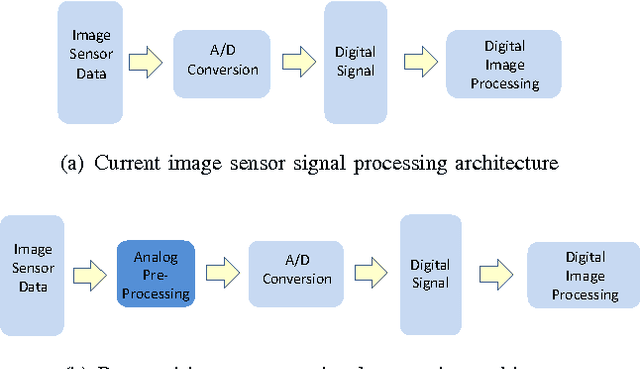
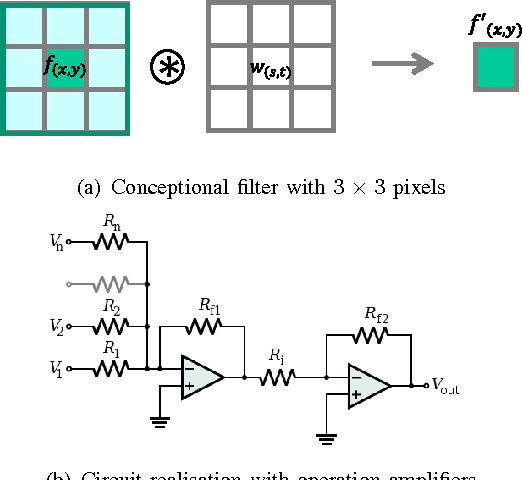
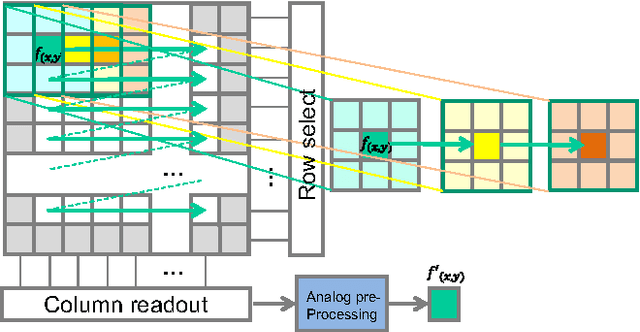
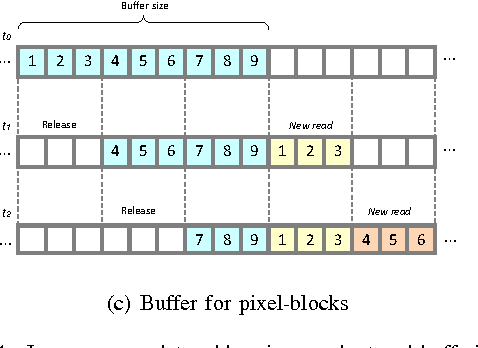
Abstract:A concept for a novel CMOS image sensor suited for analog image pre-processing is presented in this paper. As an example, an image restoration algorithm for reducing image noise is applied as image pre-processing in the analog domain. To supply low-latency data input for analog image preprocessing, the proposed concept for a CMOS image sensor offers a new sensor signal acquisition method in 2D. In comparison to image pre-processing in the digital domain, the proposed analog image pre-processing promises an improved image quality. Furthermore, the image noise at the stage of analog sensor signal acquisition can be used to select the most effective restoration algorithm applied to the analog circuit due to image processing prior to the A/D converter.
 Add to Chrome
Add to Chrome Add to Firefox
Add to Firefox Add to Edge
Add to Edge